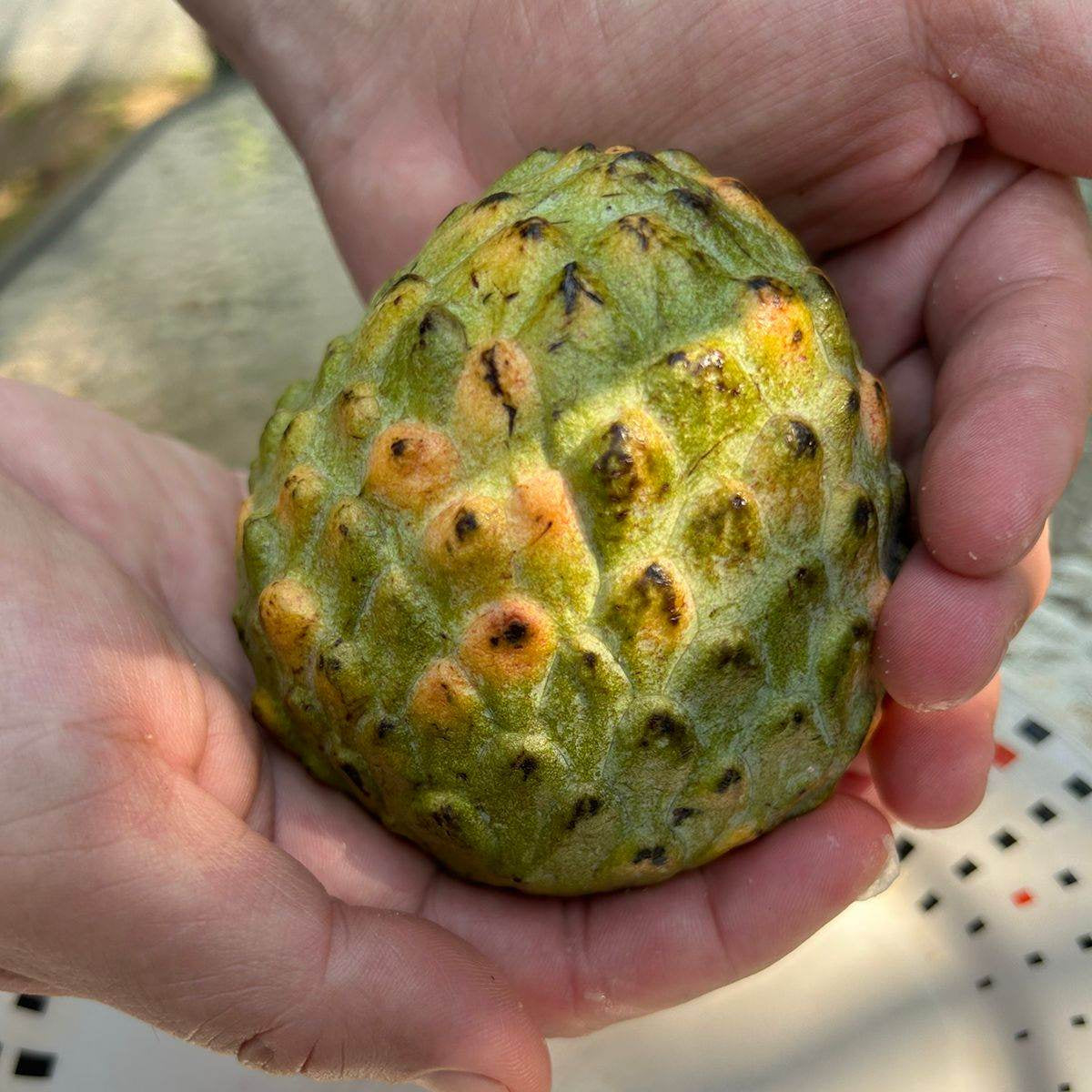Love it? Add to your wishlist
Your favorites, all in one place. Shop quickly and easily with the wishlist feature!
[message]
[title]
[message]

Veliyath Gardens
Couldn't load pickup availability
The Annona reticulata "Escarlet", a captivating cultivar of custard apple, is celebrated for its unparalleled sensory appeal. With its delicate texture, creamy consistency, and sweet flavor, the "Escarlet" variety stands out among its counterparts. This article delves into the details of this extraordinary fruit and plant, exploring its nutritional, cultural, environmental, and medicinal significance, alongside practical insights into its cultivation.
The "Escarlet" custard apple is a nutrient-rich fruit offering multiple health benefits:
Vitamins:
Minerals:
Fiber: Excellent source of dietary fiber, promoting digestive health and preventing constipation.
Antioxidants: Contains natural antioxidants that help neutralize free radicals, reducing the risk of chronic diseases.
Low in Fat: The fruit is low in fat, making it a healthy dessert alternative.
The "Escarlet" custard apple tree contributes to the health and sustainability of tropical ecosystems:
The "Escarlet" cultivar is valued not just for its flavor but also for its therapeutic properties:
Growing the "Escarlet" custard apple is a rewarding experience for tropical fruit enthusiasts.
The Annona reticulata "Escarlet" is not just a fruit—it’s a sensory delight and a testament to the richness of tropical biodiversity. Its sweet flavor, creamy texture, and nutritional value make it a cherished addition to gardens and kitchens alike. With its moderate maintenance requirements, the "Escarlet" custard apple tree is a rewarding choice for both experienced horticulturists and enthusiastic beginners.
Cultivating this exquisite variety in your garden not only adds beauty but also contributes to a healthier lifestyle. Indulge in the charm of this tropical treasure and discover why it holds a special place in the hearts of fruit lovers worldwide.
Prefers warm, humid climates but can tolerate subtropical conditions with care.
Thrives in well-drained, loamy soil rich in organic matter. Slightly acidic to neutral pH levels are ideal.
Requires consistent watering during its growth phase but should not be overwatered, as it is susceptible to root rot.
Rich in vitamin C, which boosts immunity and promotes healthy skin.
Contains vitamin B6, aiding in brain health and neurotransmitter function.
High in potassium, which supports cardiovascular health.
Magnesium and calcium are present in smaller amounts, contributing to bone health.
Appearance: The fruit has a yellow-green skin with a textured surface marked by natural sectioning, giving it a visually distinct look.
Flesh: The interior boasts a creamy, white flesh that is soft and smooth, with a consistency akin to sweetened cotton milk cream.


